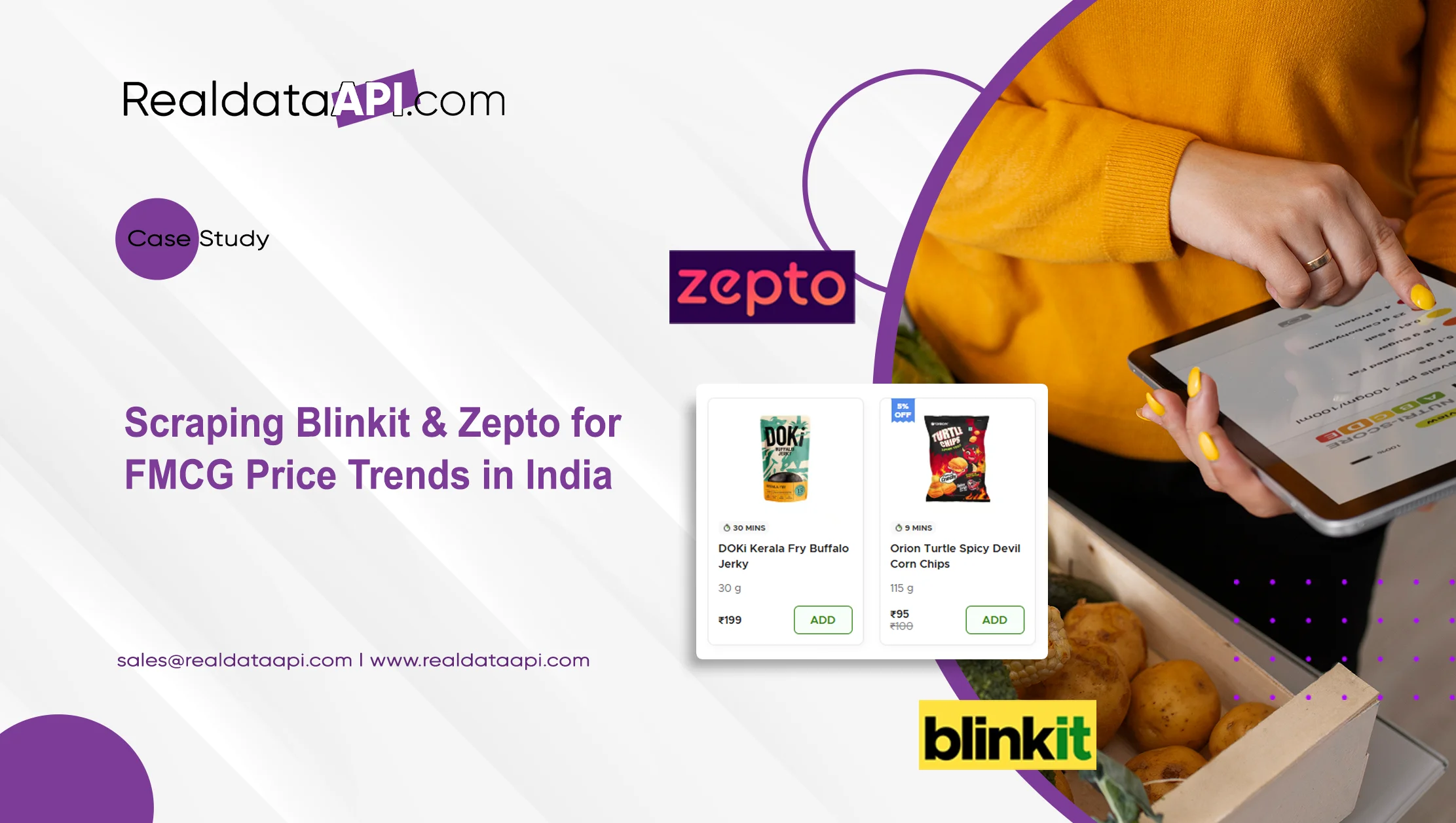
Overview
With the fast-paced growth of e-commerce and online retail in India, platforms such as Blinkit and Zepto have become key players in delivering fast-moving consumer goods (FMCG) to customers. These platforms, offering a wide range of products including groceries, daily essentials, and health products, have transformed the traditional retail landscape. As FMCG companies and market analysts strive to understand consumer behavior, product demand, and competitive pricing, scraping data from these platforms can provide valuable insights. This case study, powered by RealDataAPI, explores how scraping Blinkit and Zepto for FMCG price trends can offer a competitive edge in understanding pricing dynamics, consumer preferences, and market fluctuations.
Objectives
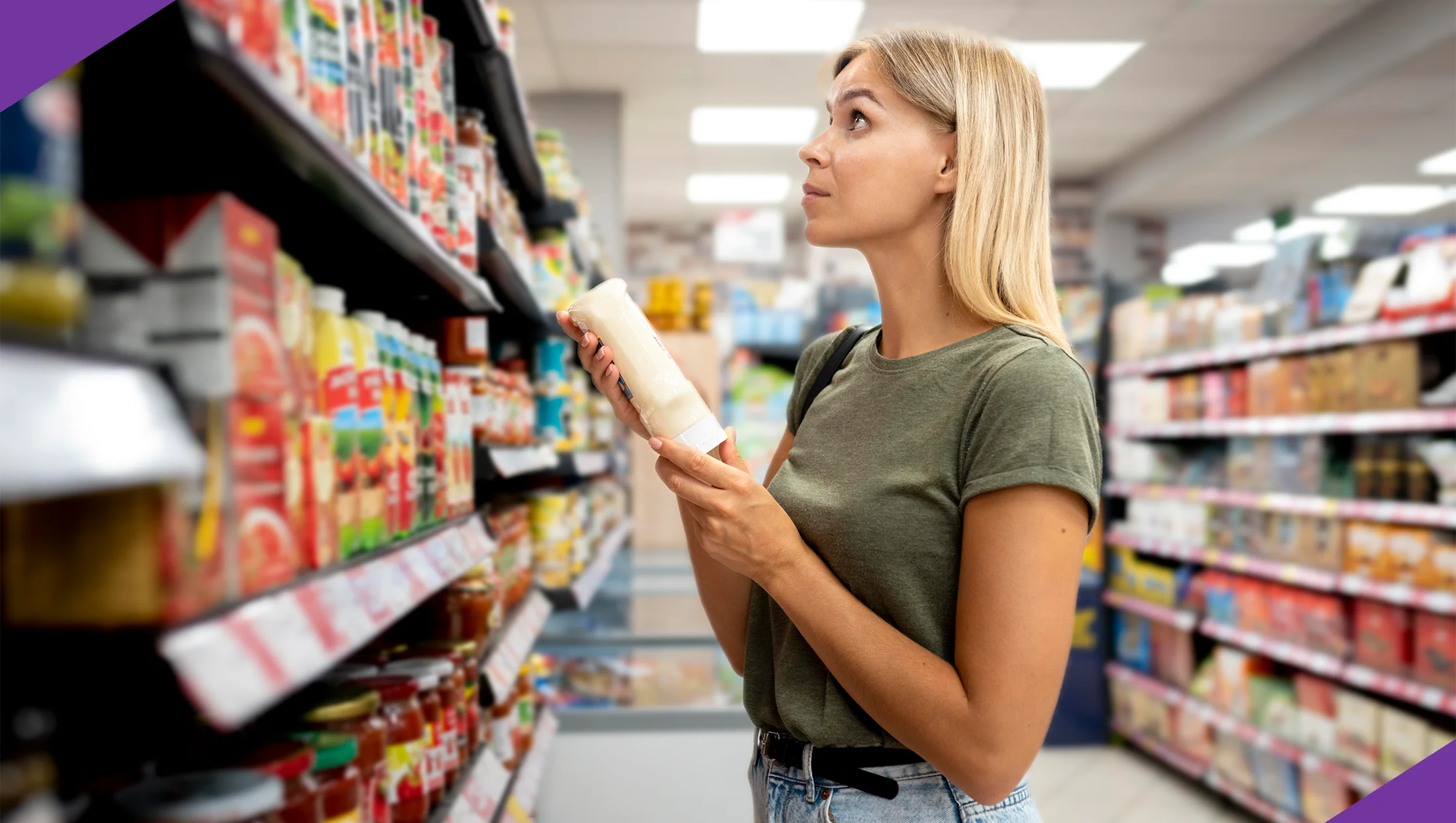
The main objectives of scraping data from Blinkit and Zepto for FMCG price trends in India are as follows:
Monitor Price Trends: Analyze the pricing fluctuations of various FMCG products over time.
Track Competitive Pricing: Compare the prices of similar FMCG products across Blinkit and Zepto.
Product Demand Insights: Identify trends in product demand based on price changes.
Market Dynamics: Understand the impact of seasonal and regional variations on FMCG pricing.
Data-Driven Decisions: Help brands and businesses make informed decisions regarding pricing strategies, promotions, and inventory management using RealDataAPI.
Platforms for Scraping: Blinkit and Zepto
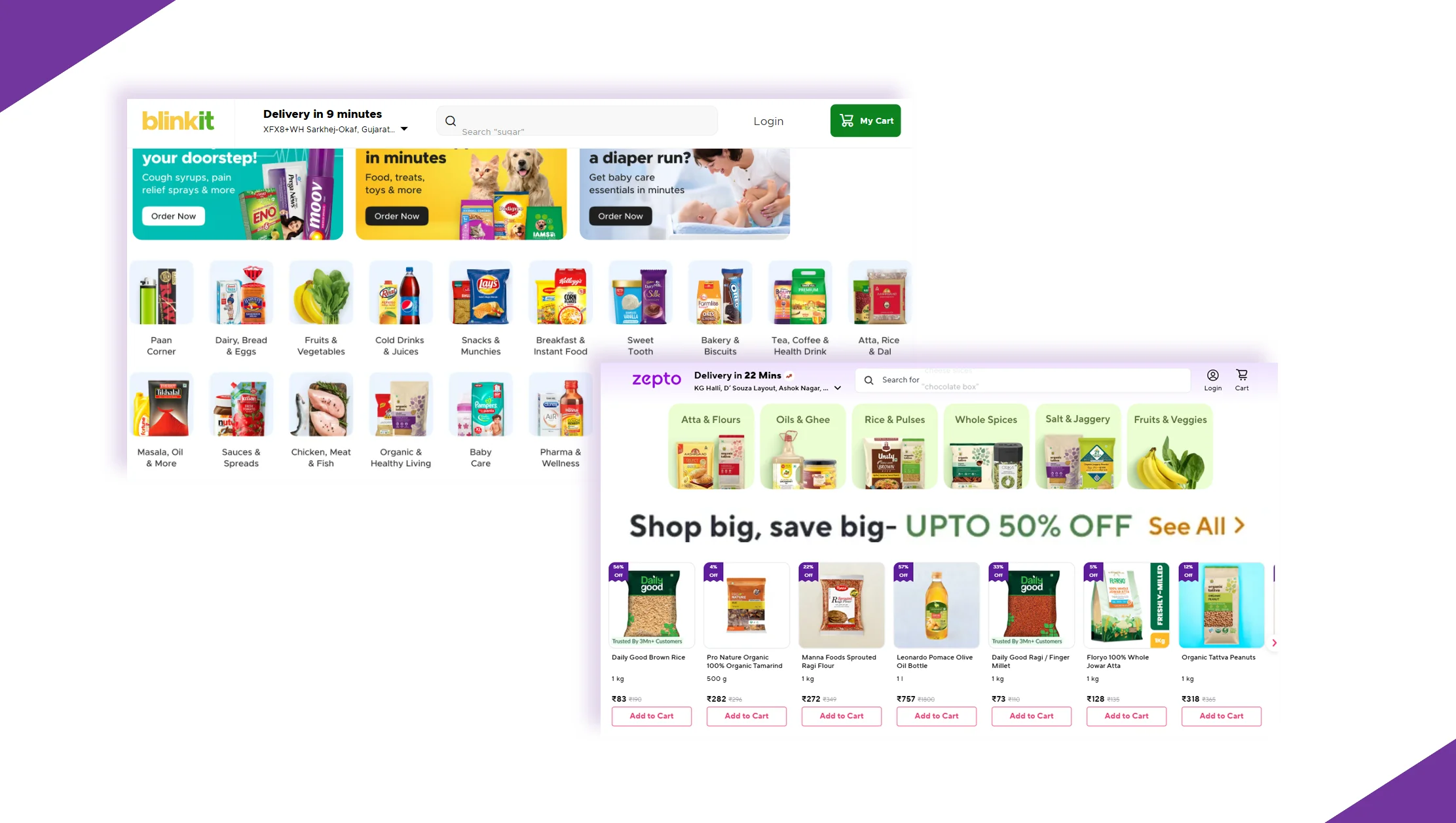
Blinkit(formerly known as Grofers) and Zepto are leading online grocery delivery platforms in India. Both platforms focus on quick deliveries, offering products in a variety of FMCG categories such as food, beverages, personal care, and household items.
Blinkit: Blinkit provides a wide selection of FMCG products with an emphasis on fast delivery (typically within 10-15 minutes) in select urban areas. The platform’s customer base is primarily composed of busy professionals, students, and urban dwellers who value convenience.
Zepto: Zepto is a similar player in the market, offering same-day or instant delivery of groceries and daily essentials. Zepto also competes heavily with Blinkit in the same metro cities but with its own customer acquisition and retention strategies.
Data Scraping Methodology
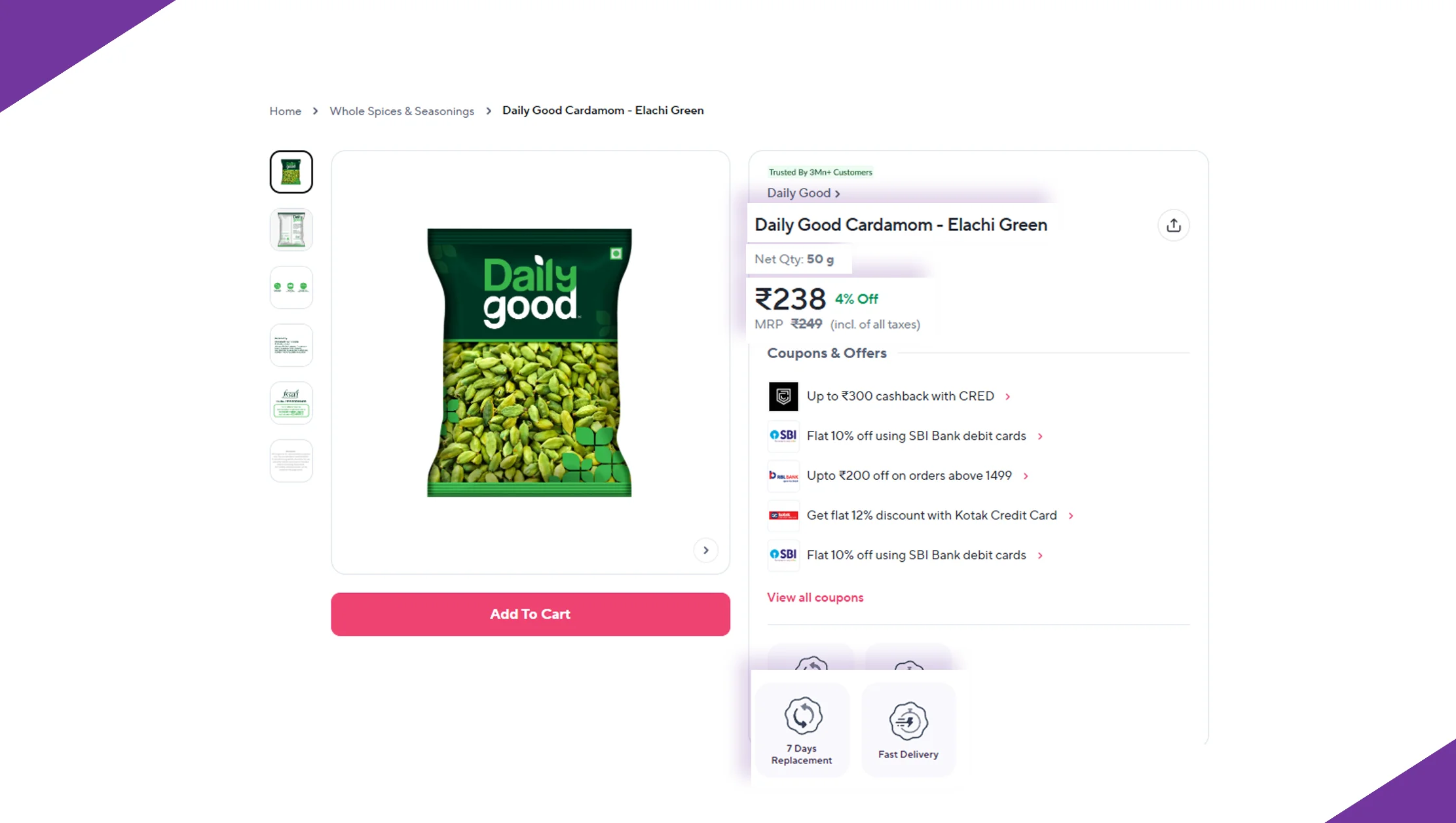
The process of scraping data from Blinkit and Zepto involves several key steps:
Platform Selection: Both Blinkit and Zepto were selected as the target platforms because of their widespread popularity and high customer engagement in major Indian cities like Mumbai, Delhi, Bangalore, and Pune. These platforms are highly competitive, making them ideal for extracting market intelligence using RealDataAPI.
Data Points to Scrape: The data points collected include:
- Product Name
- Brand
- Category (Food, Beverages, Personal Care, etc.)
- Price
- Discount Offers
- Ratings and Reviews
- Stock Availability
- Delivery Options
Web Scraping Tools: Tools such as BeautifulSoup, Scrapy, and Selenium are commonly used to scrape dynamic websites. These tools can collect structured data, even when websites employ JavaScript or AJAX for content loading.
Data Storage and Processing: The scraped data is stored in structured formats such as CSV, Excel, or a database (SQL/NoSQL). It is then processed using data manipulation tools like Pandas or NumPy to identify trends and visualize insights.
Frequency of Data Collection: Data collection occurs at regular intervals (weekly, bi-weekly, or monthly) to track price trends, seasonal shifts, and promotional offers.
Challenges in Scraping Data from Blinkit and Zepto
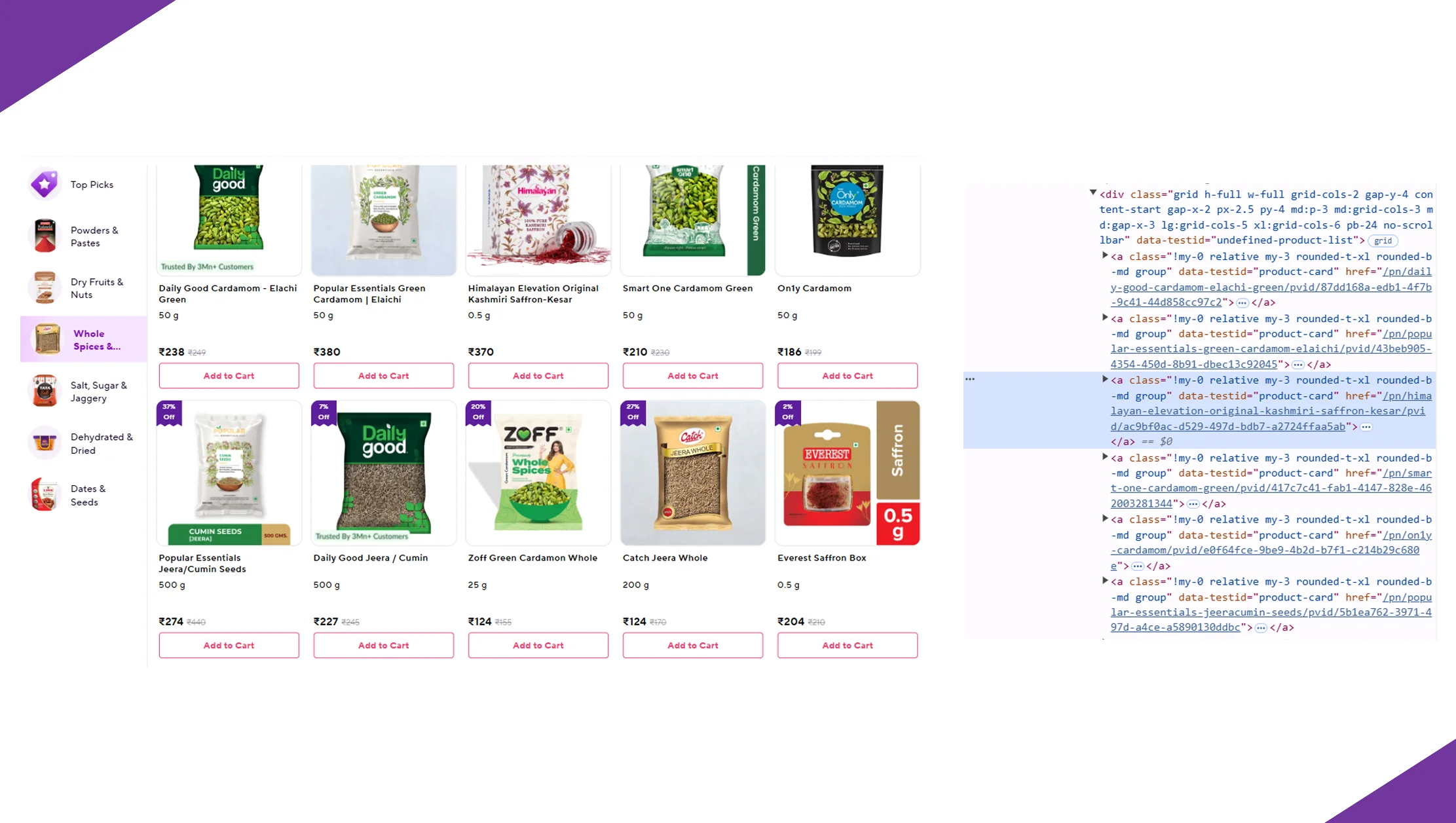
Scraping e-commerce platforms is not without its challenges. Some of the common issues faced during the process include:
Dynamic Content Loading: Both Blinkit and Zepto use JavaScript to load product data, meaning scraping the page without rendering the JavaScript may result in incomplete or incorrect data. Tools like Selenium can help overcome this challenge by rendering the page before extracting data.
Anti-Scraping Measures: Websites often deploy measures like CAPTCHAs, IP blocking, or rate-limiting to prevent automated scraping. Rotating IPs, user-agent strings, and using proxy services are some methods to circumvent these challenges.
Product Categorization: Classifying products accurately from the scraped data can be challenging, especially when product names or descriptions are ambiguous. Natural Language Processing (NLP) techniques and machine learning models can assist in better categorization.
Data Consistency: Maintaining consistency across different product listings (e.g., prices across different times, or stock availability) is critical for valid analysis. Data cleaning processes like deduplication and handling missing values must be applied.
Results and Insights
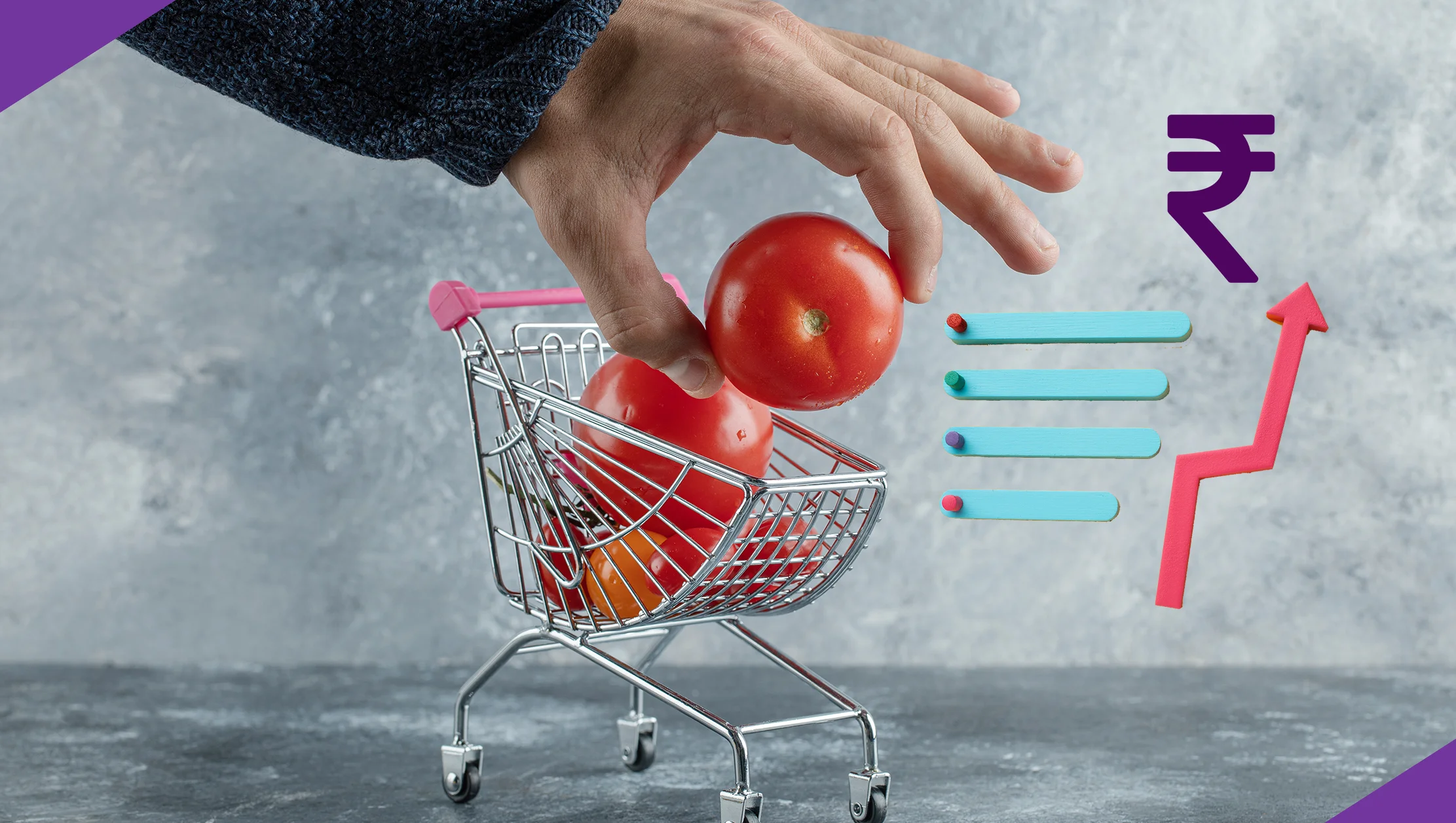
After scraping data from Blinkit and Zepto, several interesting insights were found related to FMCG price trends:
Price Fluctuations: Prices of FMCG products were found to fluctuate significantly on both platforms. For example, branded dairy products like milk and curd experienced seasonal price increases during the summer months due to increased demand, while price decreases were seen during off-peak seasons.
Promotions and Discounts: Zepto regularly offered more discounts and flash sales on FMCG products like snacks, personal care, and beverages, whereas Blinkit showed more static pricing but offered bundle discounts. Scraping these promotional data points revealed trends that businesses could leverage for special campaigns.
Brand Performance: By comparing the prices of identical products across different brands, it was observed that private label products on both platforms (such as Blinkit’s “Blinkit Essentials”) were priced lower than popular national brands. This provides FMCG brands with valuable insights into competitive pricing.
Consumer Preferences: Ratings and reviews extracted from both platforms provided clues about consumer preferences. Products with higher customer ratings tended to maintain more stable prices compared to those with lower ratings, indicating that consumers were willing to pay more for higher-quality goods.
Regional Price Variations: Analysis of the data also revealed regional differences in FMCG pricing, with products in metro cities like Delhi and Mumbai being priced higher compared to smaller towns. This reflected the cost of living and demand dynamics in different regions.
Price Prediction: By employing machine learning techniques such as time series forecasting and regression analysis, it became possible to predict future price trends for certain FMCG categories. For example, data collected over three months indicated a pattern in price increases for branded snacks during festive seasons.
Business Impact
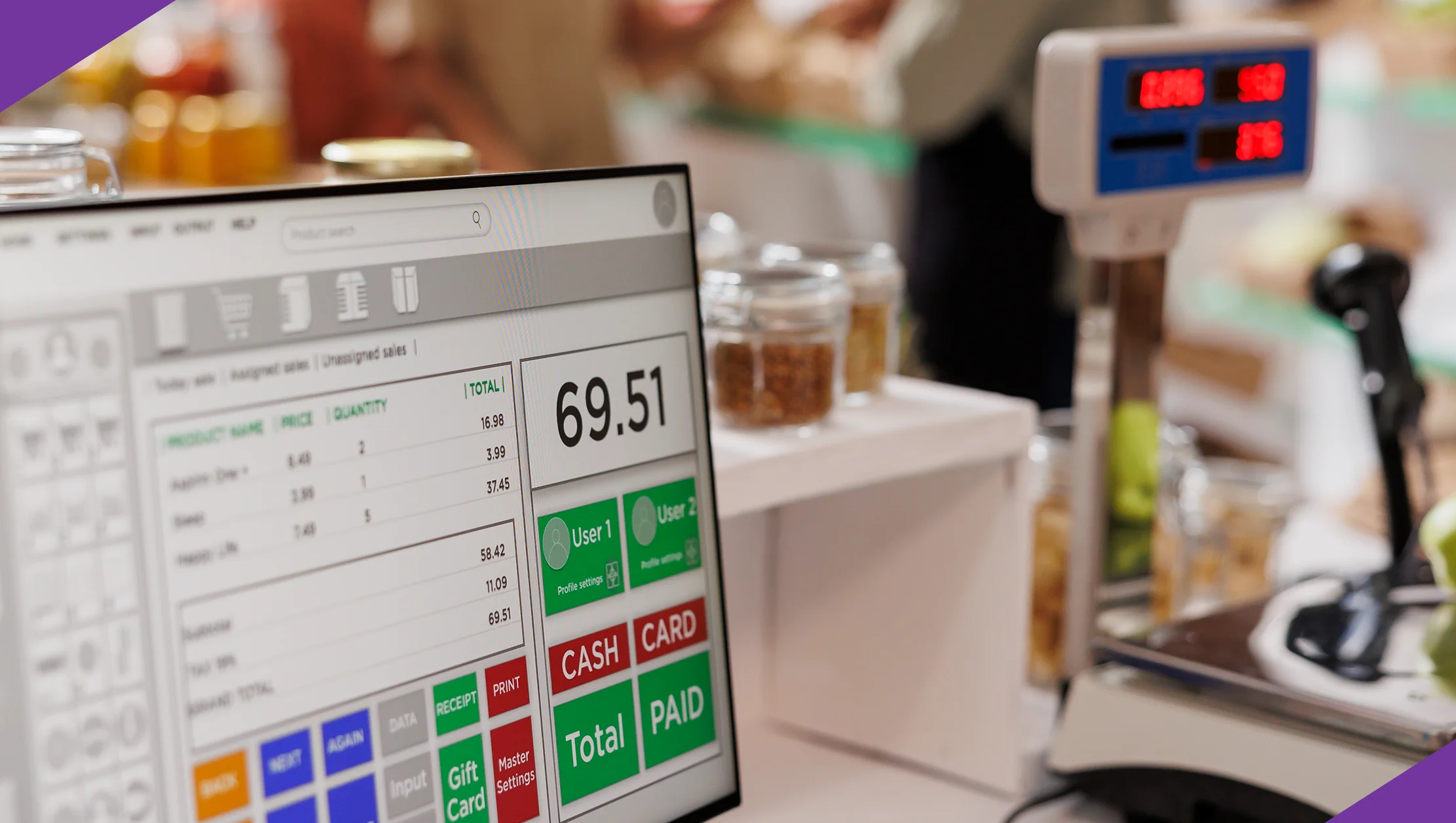
The insights gained from scraping Blinkit and Zepto data using RealDataAPI have substantial business value, including:
Pricing Strategy Optimization: FMCG companies can use the collected data to optimize their pricing strategies based on competitor pricing and demand fluctuations. Competitive pricing models can be developed, leading to more attractive offers and improved sales.
Inventory Management: Real-time data on stock availability can help businesses maintain optimal inventory levels, preventing overstocking or stockouts. This is especially important during high-demand periods, such as festivals or peak seasons.
Consumer Behavior Analysis: By analyzing consumer reviews and ratings alongside pricing data, brands can better understand the factors that influence purchasing decisions. This can help in tailoring products, packaging, and promotions to meet consumer preferences.
Promotional Planning: The identification of trends in product discounts, offers, and promotions across the platforms allows companies to plan marketing campaigns more effectively, ensuring they align with consumer expectations and competitor activities.
Conclusion
Scraping data from Blinkit and Zepto for FMCG price trends using Real Data API provides valuable insights for businesses, market analysts, and brands operating in the fast-moving consumer goods sector. By leveraging this data, organizations can track price fluctuations, monitor competition, forecast future trends, and make informed decisions about pricing, inventory, and marketing strategies. While challenges such as dynamic content and anti-scraping measures persist, advanced scraping tools and techniques can overcome these barriers, enabling companies to stay ahead in an increasingly competitive market. As e-commerce continues to grow, the ability to harness and analyze such data will be crucial for maintaining a competitive edge in the FMCG sector in India.












